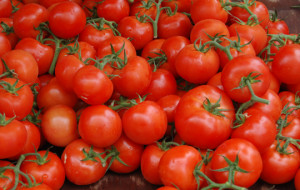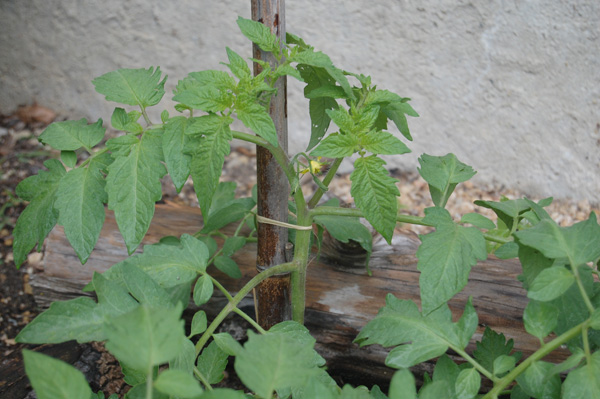 Assuming you are at the stage that you have got your plants planted, whether that is in the soil or in some sort of container and remembering to make sure that you do not put them in too early risking exposure to frost (not good), you will need to start thinking about ongoing care.
Assuming you are at the stage that you have got your plants planted, whether that is in the soil or in some sort of container and remembering to make sure that you do not put them in too early risking exposure to frost (not good), you will need to start thinking about ongoing care.
Bush type tomatoes (determinate tomato plants) grow to a set size and don’t really need any staking or pruning.
Vine plants (indeterminate tomato plants) on the other hand will need both pruning and support. There are many ways of supporting tomato plants and a popular method is to use tomato cages, but using stakes or string is equally effective. Whatever way you choose, make sure that the individual trusses are properly supported as the plant grows and take off any side shoots that appear, especially near the ground, to keep the growth under control and direct all the nutrients and water to the fruit bearing trusses.
Once the plant has developed 4 to 6 trusses the main stem should be pinched off about 2 leaves above the top truss. The 4 to 6 rule really depends on your available growing season and type of plant. For example in the UK you should probably only allow 4 trusses if planting outdoors but you will probably be OK with 6 trusses if you growing your plants in the greenhouse. Elsewhere in the world where you have a better climate you may get away with more trusses outdoors, this is really a judgment call which needs to made based on climate and the length of your growing season.
Watering is very important, you need to set up a regime that ensures your plants are never dried out but equally important they should not be saturated either. Pots and or growbags tend to need more watering as they can dry out more quickly than if you have planted in the ground, a light watering 2 or 3 times a day is recommended or you can make use of an Micro Water Irrigation System.
Feeding tomatoes is less important for plants in soil, especially if the ground has been properly prepared but again if the plants are in pots or growbags they will benefit from regular feeding.
Its best to use a formulated tomato feed and to work with the instructions on the bottle for feeding. As a rule of thumb once or twice a week is good depending on the feed you use. If you prefer to feed twice a week and this contradicts the instructions on your chosen feed you can, for example, half the dose and deliver the same amount of feed but applying it twice instead of once. It’s really up to you and you will see from the results whether that works better in your environment, remembering of course not to exceed the recommended amount on the instructions.
If you are just starting don’t be scared to experiment and treat 1/2 your crop one way and the other 1/2 another way to find out what works best. As soon as you notice a difference you can adjust your regime to the best method.
A final tip on how to pollinate tomatoes, when the flowers are on the plants they tend to pollinate themselves with no problem, but it doesn’t hurt to help them along with a little bit of gentle shaking to dislodge the pollen, particularly if they are inside a greenhouse.


